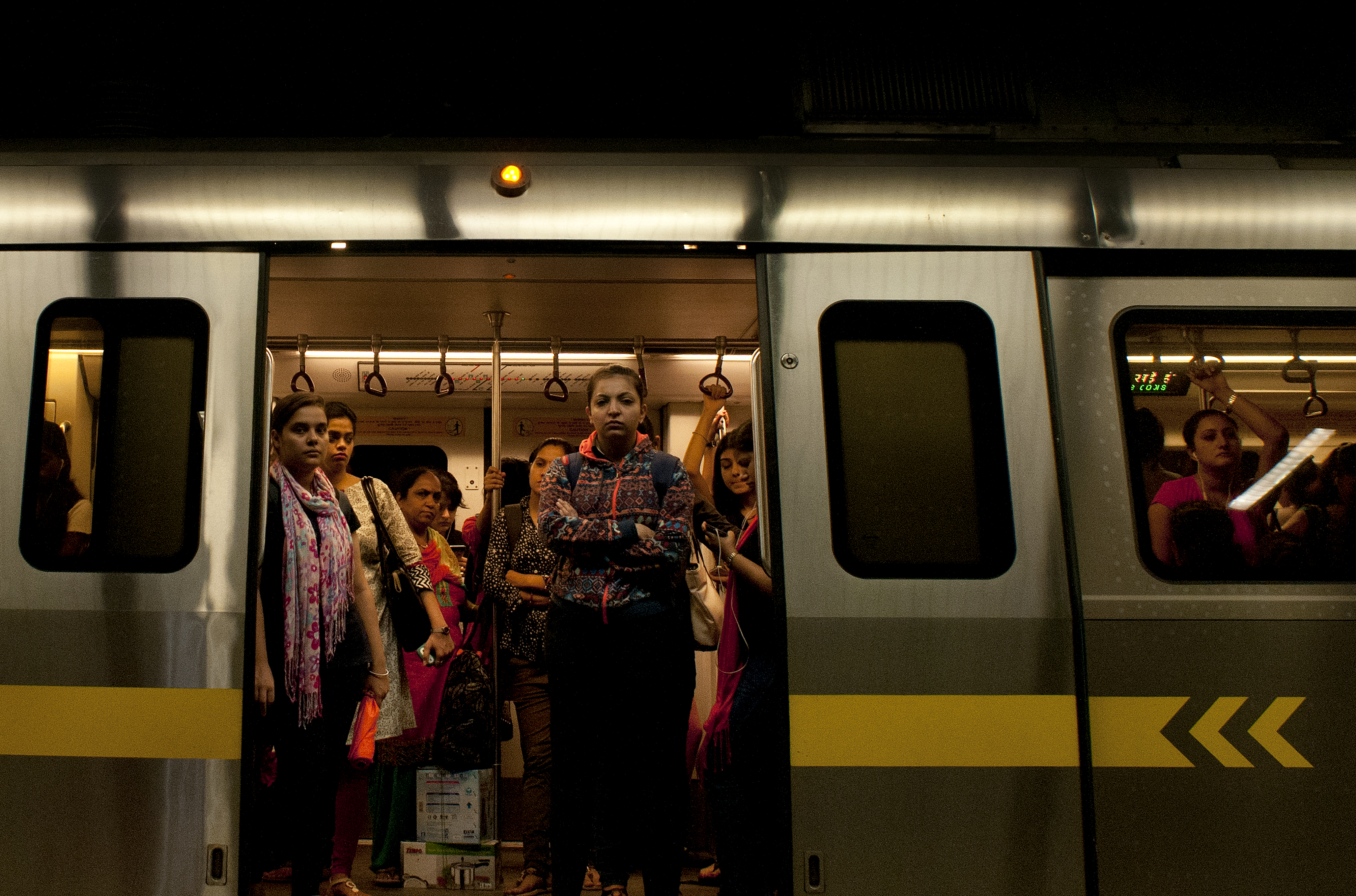Patriot got mixed reactions from the public when we asked them about kejriwal’s initiative
The Metro may never be the same again, nor the Capital city. The Delhi government’s plan to make perhaps the best transport facility of the city free for women has stirred a hornet’s nest.
Among the aam (common) people Patriot talked to, there is consensus on only one thing: This decision, to make buses and the Metro rides free for all women, has been made with an eye on the Assembly elections due in 2020 when the term for Aam Aadmi Party-led government comes to an end.
It is also seen as a reaction to the drubbing the party got in the Lok Sabha elections which saw it lose all the seven seats in Delhi. Also, while in 2014 the party had come in second, this time they could manage that only in two Parliamentary seats, yielded ground to a battered Congress which had lost hopelessly in the Assembly and Lok Sabha elections last time around.
This is being taken as a sign of a resurgence of the Congress party in the Capital city, which had seen Sheila Dikshit rule for 15 years.
Thus, the thought arises, this move is to garner women’s votes as they had come out to vote in good numbers in 2015. Men had then accounted for 49,98,086 voters (67.64%) while a total of 39,36,069 (66.5%) women had turned up.
The women we spoke with, who take the Metro regularly, were of the view that the policy should have instead targeted both males and females belonging to the lower income group. The general view is that this move went against gender equality that is being propagated by the government.
It is common knowledge now that a section of men already view the first bogey which is reserved for women as an undue advantage for women — not realising that in a train with eight bogeys, seven belongs to the general category and are chockfull of men with only a sprinkling of women.
Chief Minister Arvind Kejriwal, while announcing the decision to make travel free for women on the Metro and buses, had said that only 33% women currently use the two services. This makes the proportion of men at 77% — something the leader of the AAP believes is not conducive to harbouring a secure travel mode for women.
He had said that “keeping in mind the security of women” and considering that public transport is the safest mode of transport, cluster buses, DTC buses and Metro would become free. Officials of DTC and DMRC have been asked to give a detailed report in a week’s time on how this move will be implemented, which Kejriwal said he hopes would take 2-4 months.
The good news for the AAP government is that the Delhi government does not require the Centre’s approval, but it is the cost which has received contentious reactions.
Kejriwal had announced that it would take Rs 700-800 crore for the six months of this year, which individuals against this service see as a waste of public funds.
What the people are missing out on is that the budget allocation for 2019-20 is a whopping Rs 60,000 crore out of which a chunk of Rs 5,882 crore is already allotted to transport – a 38% increase from 2018-19. The majority of this money was given to DTC for their “working deficit” and Rs 108 crore for the subsidy for DTC concessional passes.
Plus, the women who are of the view that this would be a facility they do not require, Kejriwal said, are free to buy their tickets, “forgo subsidy so others could benefit”. But all women we spoke with, whether they backed the idea or not, said they would not buy tickets because their taxes already paid for the freebie.
Mansi Lal said that this freebie would be one way to compensate for the lack of last mile connectivity from the Metro to her home and vice versa. Paying a minimum of Rs 100 to reach the Metro station, she said at least she would save Rs 72 per day on the Metro fare.
The cost for getting to the Metro and back is an essential point that should be noted when the government want to drive the women to its buses. She pointed to the lack of rationalisation of routes which mean that “routes decided decades ago have not kept pace with changes in the city’s infrastructure”.
Giving an example of her own area, she says no re-routing of buses to Vasant Kunj from Vasant Vihar has been undertaken, despite the new Metro line at Vasant Vihar. Not just that, buses are also unfeasible for office-goers, as services are “never reliable”. Even if there are stricter time-tables, more buses would have to be put on the roads, which are already overcrowded.
The fare hike by the DMRC last year had a dramatic fallout, with commuters going back to the road, travelling in buses or taking shared rides on autorickshaws and cabs. It was a colossal loss of 4.2 lakh passengers in 2018 that the Metro authority had suffered.
Another discussion that has been provoked by Kejriwal’s initiative is the lack of CCTVs which the Opposition points to as a core promise still left undelivered by the government. Perhaps preparing for a backlash, Kejriwal in the same press conference brought them up and said that a tender for 1.5 lakh cameras had been passed and furthermore a survey to install 70,000 cameras had already been completed. The installation of these cameras will begin on June 8.
Furthermore, Kejriwal says that a proposal for 1.40 lakh cameras “will be passed this month”. This, he pointed out would bring the total number of cameras installed in the capital to 2.20 lakh — thus securing the streets of the city.
Coming back to the freebie, whether one likes it or not, it is a move which will be hailed by many who are in need of such support.
At the same time, peak hour congestion will be a nightmare on buses and trains if their numbers are not increased, especially on Metro’s blue and yellow lines.
Parnika Joel, executive
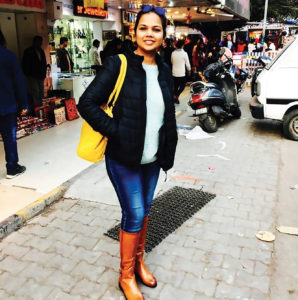
I feel good that I will be traveling for free, although there is a downside: I feel this move cements people’s views that women are a weaker gender. Moreover, I was discussing this with my male colleague and his opinion is that in India, a ‘general category’ man is the most underprivileged person, as he does not have any reservations nor privileges.
Also, when Kejriwal says that those who can afford it should pay, who will do so? We are already paying high taxes so why will individuals let go of the free facility?
Judy thangeo, administrator

I don’t believe that this freebie promise can be delivered. And even if it is, I feel so many who will avail this facility that I will never qualify for a free ride. I still pay such high water and electricity bills. Personally, I don’t believe that this plan is something urgent. He (Kejriwal) should instead concentrate on other things.
If the government has so much money, then why can’t he do something about the pollution? He should deliver better medical facilities for the poor and better education facilities for them. Yes, a lot has changed but there’s so much more that they can do. Why is the government going to waste so much money on giving free travel to all women?
And what about those women who fight for equality? When provisions such as this come they happily take it. They have double standards. They want equality but they also want ladies seat, this and that. If one wants equality it should be in every sphere.
This freebie is not justified for people like us who can buy tickets, but women who can afford will still avail it.
Seema Kumar, Pharma employee
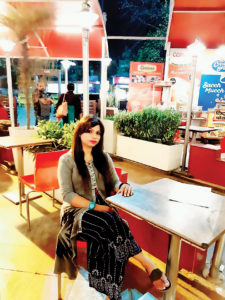
I think this move by the Delhi government is a very good initiative. At least 80% in our city belong to the lower middle class, for whom travel is expensive.
People are saying this is bad because it’s partial to one gender, but a family is composed of a woman and a man. If a woman benefits then indirectly the man will too, because the family would then be able to save more of their income. I don’t know why people do not understand this and exaggerate this male-female divide.
For me, the AAP is a party which has done good work. There’s Deen Dayal Upadhyay hospital close to my home and it has improved remarkably, due to their efforts. Now people, including me and my friends, will have more of a reason to vote for them.
Amrit Sodhi, Logistics firm employee

I take a private shuttle bus from home to work, which is in Gurgaon. Even though it is more expensive than going on the Metro, I do so because it is convenient. At least I know I will get a seat, unlike on the Metro where you would have to stand and travel all the way.
If they make it free, I will try and take the service, but the extra time taken works against the Metro plus the crowd would get even worse to start or end my day with.
I think if Kejriwal would have made this move earlier it would have been more beneficial for them politically. But, I do believe that women will largely appreciate this and the government has focused on them because they know that it is their vote bank.
Divya Sharma, MNC executive

I used to take my car from Rohini to Dwarka for work. Now that I have shifted to Dwarka itself, the commute is shorter and I continue to use my vehicle. Earlier I would take my car because the Metro route is too long and you have to change trains. And now even if they have made it free I will not use it.
This is a political stunt by the AAP. They think women are soft targets for votes. Why couldn’t they have given this facility to the economically weaker?
I will not vote for the AAP. We voted last time because people believed in Kejriwal’s promises. We thought he will bring change to this city. But he will not even get my sympathy. If he had just stopped talking so much and done his job he wouldn’t have been defeated so badly in the Lok Sabha elections.
Bharti, homemaker

I think it’s a good decision by the Delhi government. I live in Nangloi and often visit my mother or relatives who live around Moti Nagar and Patel Nagar. I don’t usually take the Metro because it is expensive and even to get there I have to take an e-rickshaw which means more money. Instead, there’s a bus that I can avail by walking a short distance and costs less than half the Metro fare.
But I still think that they should have introduced this for all the economically weaker people so that men can also be covered in this scheme. Because on one side you speak about equality and in the other you are making us feel like we are not equal.
They have done this with the elections in mind, thinking the women vote bank will be prepared and ready for them. This is what Modi (PM Narendra Modi) did when the criminalisation of triple talaq was pushed through.
Poonam, Homemaker
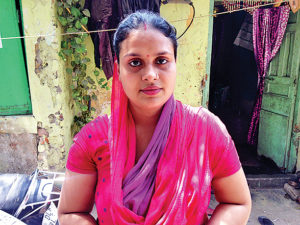
I like the decision that the government has taken. And this free fare means I will take the Metro more often. But it could be a bad move by the government because I think theft will increase on the Metro. The ridership will be much more than it is right now.
Anyway, women are mostly the ones indulging in pick-pocketing so chances are incidents such as this will only increase.
‘A targeted subsidy would be better’
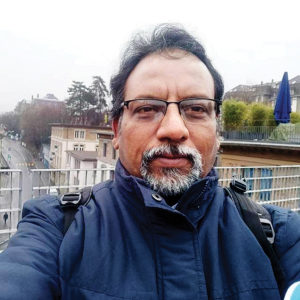
Sanjay Gupta, head of transport planning at School of Planning and Architecture, does not back the idea of free rides. Instead, he says, what the Delhi government should have done is make other modes of transport safer.
What do you think of Delhi government’s initiative, which cites the reason as security for women?
Security has nothing to do with free rides. The larger issue that I think he (CM Arvind Kejriwal) wants to address is the social point. He wants to bring in gender parity.
That’s the first point, that women are transport disadvantaged as far as mobility is concerned. The assumption in front of Delhi government is that by encouraging women to travel free you can encourage them to enjoy the mobility of mass transit – the Metro and the bus – so that they can reach their destination for work and education.
While the idea may be nice in spirit, it may lead to problems.
It’s not only Metro or bus transport but women are dependent on intermediate transport or para transit like auto rickshaw, Ola/Uber because it is comfortable, secure and a convenient system. Through these methods, she is saving time by not waiting for a bus, or travelling in one that is crowded and not comfortable.
Only when the travel is for longer distances do these modes become uneconomical. This is a clear-cut distinction which the government and policy makers need to think about.
It’s not that you make Metro free and women will start travelling on it. I think it’s very naïve for them to think this. It’s not so simple. They have a travel choice.
So, what should they focus on?
The point is who are we talking about when we talk about freebies. Most of the regular Metro travellers can afford the travel. Most of them will say they do not need free rides. But those who are below the affordability level, for them there is a strong case for transport to be subsidised.
The logic is, if you make travel free, the more crowded it will be and if you do not upgrade the capacity of the system, travel will not be comfortable. You have an example of fare hike and you saw ridership come down. But back then the Metro had a reason: to meet its operational costs.
Delhi government says they will meet the deficit with Rs 700 crore (for 6 months). My point is instead of spending the money on this freebie why can’t they have an explicit subsidy for the targeted women where they have a special card which can be availed by income proof? The rest of the money they should use to augment public transport.
We are already starved of the requisite number of buses. We don’t even have 50% of the buses what we need. It would be thus appropriate to invest that money for a bigger fleet of buses which will then benefit the city as a whole and not only a segment which they are trying to portray.
The Delhi government wants to target those women who take auto rickshaws and Ola/Uber, saying these are not safe modes of transport. Your comment?
I tend to differ. At least cabs are safer. The point is, one can always make it safer. GPS systems in cabs are tracking your whereabouts, the auto rickshaws should be enabled to have this GPS system as well. That is where they need to spend the money, to make these systems safer. Because these systems are more convenient.
Other areas where they can invest is in having more women-only bus services, where every third bus or fourth bus on a given route is Ladies Only, at least in the peak hours. I’m sure the DTC can give them the numbers about the most popular routes of public transport. That would be more beneficial because they will feel safer.
Only those women who have no other choice, the economically weaker sections, take the bus. But even for them, yes, it may marginally help their income, but wouldn’t it be better if they didn’t have to wait as long to get on a bus? Or the bus would not be overcrowded?
Plus, if you improve the quality of buses then others would also want to avail the facility.
What I think is they should have a trial round for a week and see what the response is like. Real evidence needs to be gathered. I suggest they should find out the income level of the travellers who are currently taking the metro.
Peak hours see jampacked trains, and free rides may see more. Do you think regular commuters will then go back to the road?
One, you may have cases where people will just take the Metro for a joyride because it’s free. There will be unnecessary travel taking place.
Two, if you are not adding more women coaches on the Metro, how will they feel safe?
The Delhi government is shelling out money for making it free but at the same we will probably not be able to improve the productivity of the Metro.
Yes, women are transport disadvantaged and women empowerment is essential and transport is a great enabler, I’m absolutely clear on that. But the point is, just giving a freebie is not the answer. In the countries where free rides are given, the concept is to reduce carbon emissions.
Here, the Metro gets crowded, they may go back to their two-wheelers or cars, that’s quite possible.
Instead they should have more women’s buses and maybe even point-to-point taxi services for women after identifying major points like activity nodes of Connaught Place, work centres like ITO and ministries.
Delhi government should invest in those kinds of services, which will not hurt the operations of the Metro and its economics nor the DTCs. Anyway, it doesn’t look like DTC will improve quality of service. Looks like it will remain as it is.
Why AAP is for free rides

THIS IS just the kind of out-of-the-box innovation that India’s cities need. As a chief minister who doesn’t have control over law and order, and policing, he has limited options when it comes to enhancing women’s security in the capital. But his scheme to make public transport free for women could go a long way in making their travel safer and comfortable.
After the central government hiked Delhi Metro fares despite the Aam Aadmi Party government’s protests in 2017, the average daily ridership on the Metro fell from 28 lakh to 25 lakh. Thousands of crores of rupees of public money has been invested in constructing Phase 3 of the Metro, yet the ridership is over 15 lakh below the estimated capacity of 40 lakh.
Where did the commuters who were forced out of the Metro go? They shifted to alternative modes of transport like shared cabs, two-wheelers, private buses, autos, and some even choose to walk. While this does not expose male commuters to unsafe environments, it puts lakhs of women at risk of being targets of harassment or worse, assault. Most of us are familiar with women friends or colleagues calling their male counterparts during a shared cab ride just to feel reassured about their safety.
Making Metro rides free for all women will bring back lost ridership of at least women commuters, thus significantly improving access to safe travel for women. Not only will it bring back some of the lost commuters, it will encourage a large number of women to step out of their homes for employment opportunities because of the newfound access to safe, affordable and comfortable public transportation.
Another way in which this proposal would make Delhi safe for women is through sheer reclaiming of public spaces. This piece by Sanjukta Basu based on papers on gender and public spaces argues that the more women occupy a public space, the safer it shall become for them. Women need to own spaces to feel safe. The idea is simple: if the ratio of women to men in any given public space were to be less skewed toward men, it would lead to that space feeling more secure. As of now the ratio of women to men in metros and buses is 1:2. If women are encouraged to use these services in larger numbers, it would definitely lead to a more balanced occupancy of public transport.
If all is so well with the Aam Aadmi Party government’s proposal, why is it prompting such a sharp response from the Opposition? Why is the BJP opposing the idea? There are some questions and concerns some people have about this scheme and it is important to address them.
- Does making the Metro free for a section of women make for bad economics?
Contrary to what some might believe, making public transportation free or affordable is never “bad economics”. Across the world, leading cities like Singapore, Hong Kong, among others, are trying to find ways to reduce dependence of transport bodies on fare based revenues, and developing non-fare revenue sources. Cheaper transport for the people boosts the economy, instead of stifling it, by improving mobility of the workforce. In Delhi’s case, it will help women explore opportunities that were thus far seen to be out of reach in terms of physical distance. The shortfall in revenue for the DMRC will be reimbursed to it by the Delhi government, ensuring there is no damage to the quality of service offered by the agency.
- Where will the Delhi government get the money to fund such an ambitious scheme?
The AAP government, often accused of indulging voters in “freebies” has actually been most financially prudent. It is one of the few states in the country that never spends more money than it recovers as tax revenue. Despite offering free water and cheap electricity, Delhi’s revenues have doubled from approximately Rs 30,000 crore in 2014-15 to a projected Rs 60,000 crore in the last Budget presented in February 2019. The city’s transport Budget too, has more than doubled as a result in absolute terms. Delhi government has already placed orders for 3,000 new buses, 1.4 lakh CCTV cameras, and already pays for marshals in all buses. In spite of these spends, the government has enough money to spend on making transport free for women because of sound economic management of the Arvind Kejriwal government.
- Doesn’t ‘free service’ usually also mean poor service?
No. This is a myth that the middle class is fed by lazy neo-liberal economists who want all essential services to be in private hands. Take Delhi’s water supply for instance — despite making water up to 20,000 liters per household per month free of cost, Delhi’s government-run piped water supply has only expanded its coverage and each year the quality of water gets better with added water treatment capacities. Delhi’s government schools and hospitals are free of cost, but the AAP government’s commitment to quality education and healthcare has seen consistent improvement in the quality of services citizens can avail despite being free to use. When citizens pay taxes to governments, they’re paying for essential public services. If there are women who want to continue to pay for their tickets, the AAP government has clarified that they can continue to do so.
- Will the added women ridership not cause overcrowding?
The estimated capacity of the Delhi Metro after Phase 3 has been completed and stands at 40 lakh, but current ridership is just 25 lakh. Two new Metro lines, the Pink and Magenta are especially underutilised because they began operations after the fare hike, so initial adoption itself has been slow to pick up.
- Why now? Why at the fag end of the Aam Aadmi Party government’s tenure?
The honest answer to this question is that every government is elected for all five years, to the last day of the last year in office. There’s no right or wrong time to introduce a scheme. Many had advised Arvind Kejriwal in 2015 to delay the implementation of cheap electricity and free water schemes towards the second half of his tenure so it’s fresh in people’s minds before they vote. But he chose to fulfil his election promise in his first week of office. Governments have a pace of functioning and a limited bandwidth. Everything cannot be done in one go, and the fulfilment of any party’s vision is a work in progress — just like it is for the Aam Aadmi Party.
www.newslaundry.com

